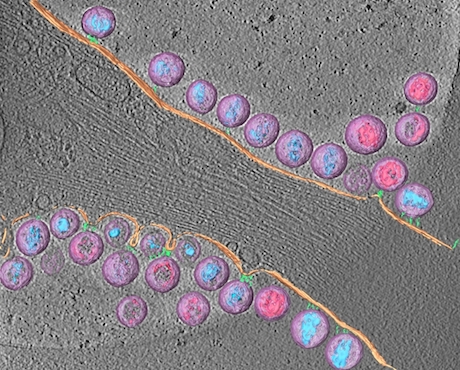People with systemic lupus erythematosus can experience a variety of symptoms, such as fatigue, joint pain, skin rashes and kidney problems. Often the symptoms come and go in episodes called flares. In lupus, the immune system goes haywire and produces antibodies that are directed against the body itself.
The immune system can produce many types of antibodies, directed against infectious viruses (good) or against human proteins as in lupus (harmful). Each antibody-secreting cell carries a DNA rearrangement that reflects the makeup of its antibody product. Scientists can use the DNA to identify and track that cell, like reading a bar code on an item in a supermarket.

Iñaki Sanz, MD is a Georgia Research Alliance Eminent Scholar, director of the Lowance Center for Human Immunology and head of the Rheumatology division in the Department of Medicine.
Postdoc Chris Tipton, GRA Eminent Scholar Iñaki Sanz and colleagues at Emory have been using these DNA bar codes to investigate some fundamental questions about lupus: where do the autoantibody-producing cells come from? Are they all the same?
Their findings were published in Nature Immunology in May, and a News and Views commentary on the paper calls it “a quantum advance in the understanding of the origin of the autoreactive B cells.†It’s an example of how next-generation sequencing technology is deepening our understanding of autoimmune diseases.
The Emory team obtained blood samples from eight patients experiencing lupus flares and compared them to eight healthy people who had recently been vaccinated against influenza or tetanus.
When the immune system is responding to something it’s seen before, like when someone receives a booster vaccine, the bar codes of the antibody-producing cells look quite similar to each other. A set of just a few antibody-producing cells multiply and expand, making what looks like clones. In contrast, the researchers found that in lupus, many different cells are producing antibodies. Some of the expanded sets of cells are producing antibodies against infectious agents.
“We expected to see an expansion of the cells that produce autoantibodies, but instead we saw a very broad expansion of cells with all types of specificities,†Tipton says.
To use a Star Wars analogy: a booster vaccine response looks like the Clone Wars (oligoclonal — only a few kinds of monsters), but a lupus flare looks like a visit to Mos Eisley cantina (polyclonal — many monsters). Read more








